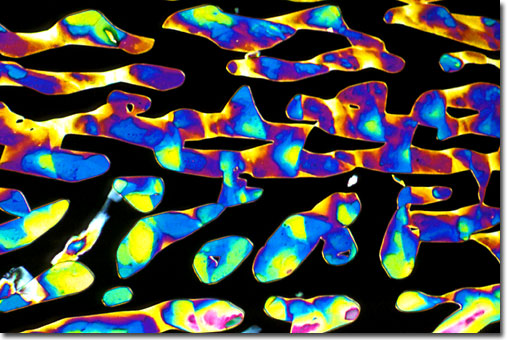|
Aspartic acid is one of two amino acids (the other is glutamic acid) that has a negatively charged carboxylate group on the side chain. This gives aspartic acid an overall negative charge at physiological hydrogen ion concentrations (approximately pH 7.3). Although aspartic acid is considered a non-essential amino acid, it plays a paramount role in metabolism during construction of other amino acids and biochemicals in the citric acid cycle. Among the biochemicals that are synthesized from aspartic acid are asparagine, arginine, lysine, methionine, threonine, isoleucine, and several nucleotides.
|
